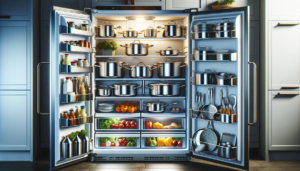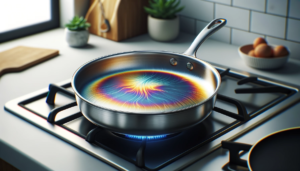Is that stainless steel pot passed down from grandma safe to use?
With proper care, stainless steel cookware can potentially last for generations.
However, very old and damaged pieces pose contamination risks from metal leaching, bacteria growth, and degrading coatings.
This article provides tips on identifying signs of wear in antique cookware and recommends tests to evaluate safety.
We also offer stainless steel care advice and guidelines on when to finally replace very old pieces.
Let’s dive into inspecting vintage stainless steel cookware and identifying any red flags.
Is Old Stainless Steel Cookware Inherently Unsafe?
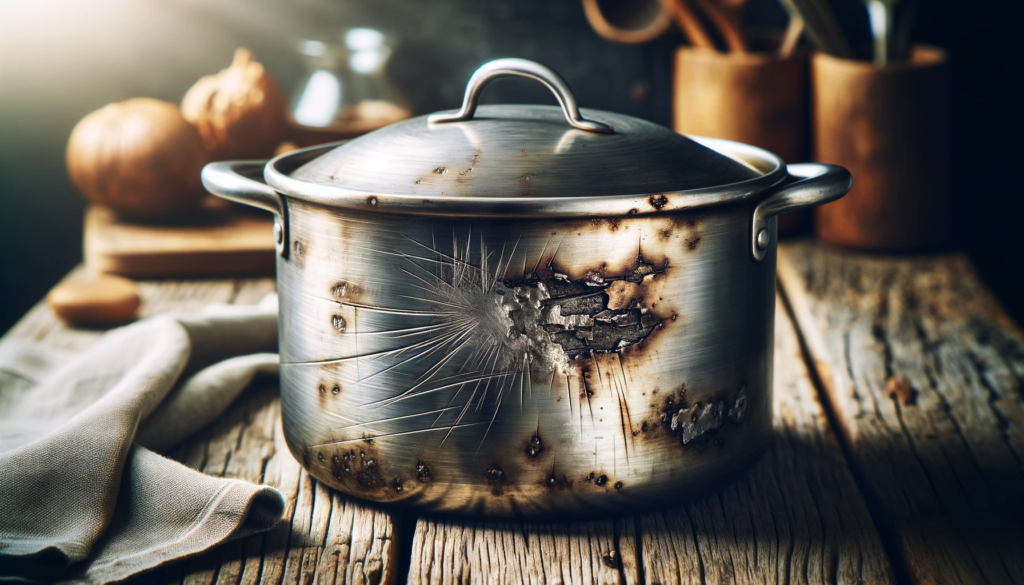
While very old stainless steel cookware that shows extensive wear and tear poses potential safety issues, well-maintained vintage pieces can still be reliably safe to use for decades.
Perform thorough inspections and testing to identify any specific damage or risks.
With proper care and periodic replacement as recommended, stainless steel live up to its reputation as a hardy, long-lasting cookware material.
Now let’s explore signs of damage and maintenance tips in more detail.
What is Stainless Steel Cookware?
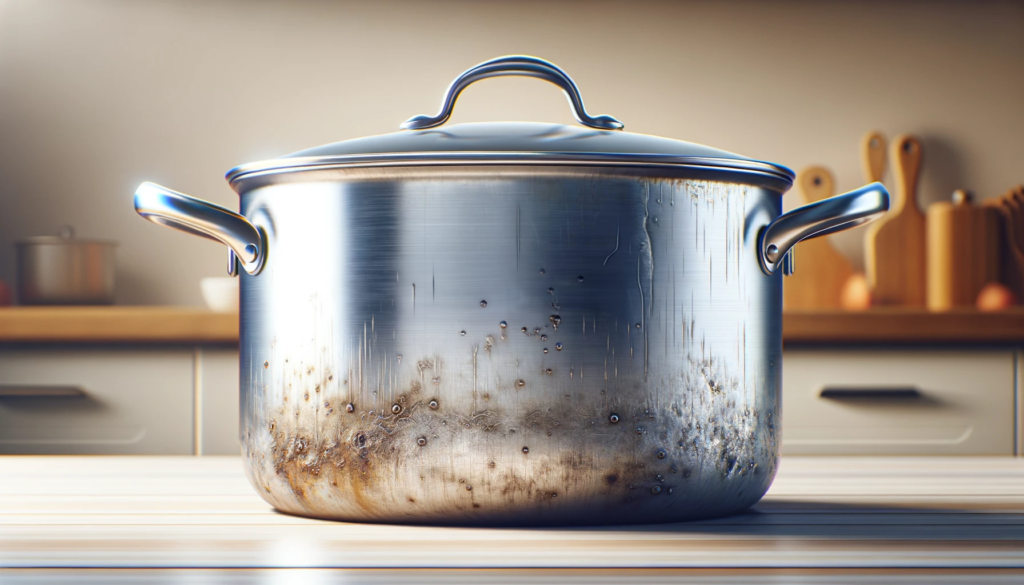
Stainless steel became a popular cookware material in the mid-20th century.
Its corrosion resistant and nonreactive properties made it an ideal choice to replace some of the more high maintenance materials used at the time like cast iron or copper.
The typical stainless steel used for pots and pans contains chromium which forms an invisible passive layer of chromium oxide when exposed to oxygen.
This protective layer prevents rusting and staining.
Quality stainless steel cookware if properly cared for can potentially last for many decades.
The material is highly durable and does not easily warp or dent like other reactive metals.
As long as the passive chromium oxide layer remains intact, stainless steel maintains its integrity and can offer safe, non-stick cooking.
However, very old cookware that has been used regularly for say over 50 years can start to show some wear and tear.
Signs of Wear and Tear to Look Out For
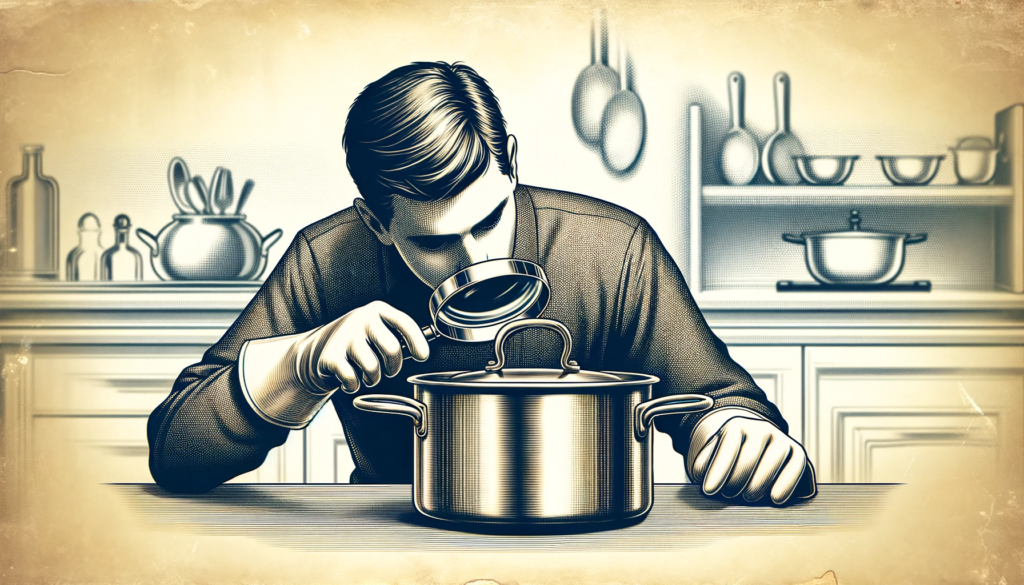
When inspecting older stainless steel pots and pans, be on the lookout for any physical damage to the cookware.
Here are some warning signs:
Discoloration and Small Pits/Pockmarks: While stainless steel doesn’t rust, iron particles in the metal can start to oxidize leading to orange/brown discolorations.
Pits or etch marks can also form in the surface.
These don’t pose a safety hazard on their own but indicate the start of deterioration.
Warping, Dents, Deformations: Long term use over high heat can cause stainless steel to slightly warp.
Pots/pans that have been dropped or banged around may have small dents and deformations.
This compromises heating consistency.
Severely warped or misshapen cookware should be discarded.
Loose Handles: The sealed joints where handles meet the cookware could come loose over many years of wear.
Check that handles are firmly riveted for safe use.
Exposed raw edges around loose handles can be sharp and prone to bacteria buildup.
Scratches and Flaking of Cooking Surface: Deep scratches and flaking inside very old cookware negatively impacts cooking performance.
Food particles can embed in scratched surfaces and pose contamination risk.
Flaking exposes raw stainless steel underneath which reacts to acidic ingredients.
These all impact food safety.
Safety Concerns with Old Cookware
Aside from structural wear and tear, there are some safety issues to weigh when considering very old stainless steel cookware that has been used regularly for 30-40+ years.
Potential Leaching of Metals: Even quality stainless steel contains small amounts of metals like nickel and chromium.
Over decades of repeat exposure to heat and food acids, trace metals can start leaching into foods being cooked.
Consuming these metals poses health issues especially for those with sensitivities.
Compromised Non-Stick Coatings: Some older stainless steel was coated with non-stick finishes that break down over time.
Flaking Teflon or ceramic particles in poor condition non-stick cookware can be inadvertently ingested.
This also introduces harmful perfluorinated compounds into food.
Bacteria and Other Contaminants: Microscopic grooves, pits, and cracks in deteriorated stainless steel cookware provide the perfect home for pathogenic bacteria like E. coli and Salmonella to harbor.
Even with washing, bacteria buried in damaged cooking surfaces can be problematic.
Testing Cookware for Safety
To evaluate if very old stainless steel pots and pans can still be safely used, here are some at-home tests than can identify issues:
Visual Inspection for Damage: Carefully examine cookware inside and out under bright lighting.
Be methodical and inspect all surfaces.
Make note of any discoloration, warping, pitting, flaking, cracking, scrapes, dents, or material breakdown.
Even slight breakdowns signal that safety may be compromised.
Magnet Test: Refrigerator magnets weakly stick to stainless steel.
If your cookware is strongly magnetic, the protective stainless layer has worn away exposing reactive core metal underneath.
This area of cookware should not touch food.
Reactivity Test: Stainless steel is supposed to resist reacting with acidic ingredients like tomatoes, vinegar, wine, and citrus.
Cook a tomato based pasta sauce or lemon juice.
If you notice pitting, etching, color changes, or metal leaching indicates a loss of the safe chromium oxide layer in spots.
Test for Heavy Metals: At-home heavy metals testing kits are affordable and useful.
Swabbing inside damaged looking cookware then testing the swab for presence of lead, nickel, chromium and other metals provides good insight into whether metals are leaching at unsafe levels.
Consider testing older cookware every few years.
Maintaining and Caring for Old Stainless Steel Cookware
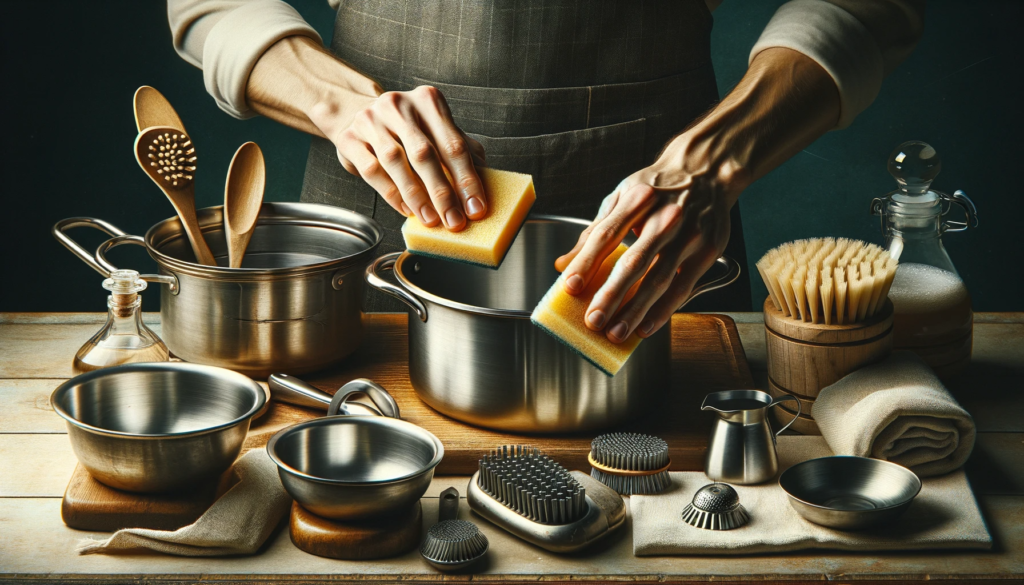
To maximize the safe working lifespan of stainless steel cookware and minimize deterioration, proper maintenance and care is essential.
Here are some tips:
Use Non-Abrasive Cleaners: Avoid using abrasive scouring powders or metal scrubbies over time which create microscopic scratches compromising the protective layer.
Use soft sponges, nylon scrub pads, or soft bristle brushes instead along with non-abrasive cleaners.
Remove Stubborn Build-Up Properly: For stuck-on oil residue, food grease etc, use a paste of baking soda and water and scrub gently with a plastic brush or soft sponge.
Rinse and dry thoroughly.
Soak cookware with difficult deposits for an hour before scrubbing if needed.
Prevent Warping During Storage: Over time, the pressure of stacking cookware can distort shape leading to wobbling pans unsuitable for even heating.
Nest cookware in each other or store pieces individually on open shelves.
Check Copper Bottoms Yearly: Some older stainless came with copper bottoms to improve heat conductivity.
The copper oxidizes over time; have it re-tinned every decade to maintain this feature if present in your vintage cookware.
When to Replace Cookware for Safety

With proper care, quality stainless steel cookware can offer reliably safe, non reactive cooking for years.
However even well maintained pieces do gradually show wear and tear over decades of regular cooking.
Here are good guidelines on when to retire stainless steel cookware:
Pitting and Discoloration Over Large Areas: If you notice extensive brownish mottling, pitting, and corrosion covering over 30% of the cooking surface or exterior, it is time to replace that pot or pan even if no metal leaching is yet detectable.
The protective layer has started deteriorating extensively leading to more leaching risk in coming years.
Visible Deformations and Damage: Severely warped pans that spin and have visible ripples across the bottom don’t sit flush on burners leading to serious hotspots.
Bad dents on rim edges are also problematic.
Deep scratches degrade cooking performance and pose contamination risks.
Replace such damaged old cookware.
When Fail At-Home Safety Tests: If during your own reactivity tests or heavy metals test kits frequently detect issues year on year, that is a clear sign to retire that cookware for safer alternatives free from potential leaching issues even if pieces look physically fine.
Exceeding Recommended Safe Age: As a general safety guideline, replace stainless steel cookware exceeding 50 years of moderate daily usage even if it passes visual inspections.
Periodically replacing used stainless steel cookware every 30-50 years ensures you get the maximum service life while staying on the safe side.
The advantages of replacing very old or excessively used stainless steel pots and pans every few decades far outweigh holding onto damaged antique pieces purely for sentiment’s sake.
You eliminate safety risks from gradual metal leaching, bacteria buildup in pitted surfaces, potential chemical contamination from degraded coatings etc.
You also generally get better cooking performance from newer stainless steel innovations.
Play it safe by retiring old, worn out stainless steel cookware.
Conclusion
While very old stainless steel cookware that shows extensive wear and tear poses potential safety issues, well-maintained vintage pieces can still be reliably safe to use for decades.
Perform thorough inspections and testing to identify any specific damage or risks.
With proper care and periodic replacement as recommended, stainless steel live up to its reputation as a hardy, long-lasting cookware material.
Now let’s explore signs of damage and maintenance tips in more detail.

